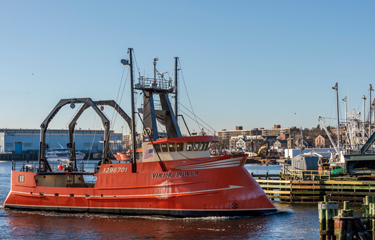U.S. President Joe Biden signed the American Rescue Plan Act into law on Thursday, 11 March, almost one year after the CARES Act established the country’s first federal coronavirus relief bill.
The USD 1.9 trillion (EUR 1.6 trillion) American Rescue Plan Act is the largest spending package in U.S. history and contains significantly less relief for the commercial fishing and seafood industries than the CARES Act included, though much of that funding is yet to be distributed.
The seafood industry will benefit from language under the bill’s agriculture section, which comes with a USD 4 billion (EUR 3.3 billion) set-aside to assist domestic food production and the supply chain in coping with ongoing covid response and preparedness.
“The American Rescue Plan Act’s inclusion of support for the seafood industry in the form USDA purchases recognizes the market losses and incredible costs incurred by our industry to keep Alaska’s seafood workforce and fishing communities safe amid the pandemic,” Alaska Seafood Marketing Institute Executive Director Jeremy Woodrow told National Fisherman.
The agriculture set-aside is designated:
- “To purchase and distribute agricultural commodities (including fresh produce, dairy, seafood, eggs, and meat) to individuals in need.” This funding could serve to aid the flagging restaurant sector as a conduit for storage, staging, and delivery.
- “To make grants and loans for small- or mid-sized food processors or distributors, seafood processing facilities and processing vessels, farmers markets, producers, or other organizations to respond to COVID-19, including for measures to protect workers against COVID-19.” The USDA has defined small- or mid-sized businesses as those with an average adjusted gross income of less than USD 900,000 (EUR 756,000) for the tax years 2016 through 2018.
- “And to make loans and grants and provide other assistance to maintain and improve food and agricultural supply chain resiliency.” Details of this program have not yet been released, though the USDA website is now set up for agriculture loan applications.
USDA is hosting listening sessions on 17 and 18 March to establish a process for the loan and grant applications for seafood processors, and distribution of other funds.
“We appreciate USDA working to get feedback from the seafood industry on a program that will fulfill the industry’s needs. We are food producers,” Maine Lobster Dealers’ Association Executive Director Annie Tselikis told National Fisherman. “The goal is to achieve some COVID cost compensation for the incredible expenses these companies have had to incur this year.”
Seafood companies could see additional relief distributed closer to home via billions of dollars in aid being sent to states, but access would depend entirely on outreach and lobbying efforts on a state-by-state basis, the capacity for which will vary widely throughout the industry.
U.S. Senator Lisa Murkowski (R-Alaska) helped secure funding for the seafood sector under USDA before voting against the full bill.
“I collaborated with a small group of Republicans to offer a USD 618 billion [EUR 519 million] relief proposal with the goal of finding middle ground,” Murkowski said in a statement. “Our working group met with President Biden and Vice President Kamala Harris to discuss our respective proposals, and found that we shared many of the same priorities. I had hoped that we would be able to find common ground.”
Woodrow said his group appreciated the work Murkowski had done to steer financial relief toward the seafood industry.
“We are grateful to Sen. Lisa Murkowski and the members of Congress that worked hard to recognize and include seafood," Woodrow said.
Photo courtesy of Dan Logan/Shutterstock







